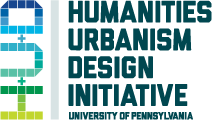Coursework
FNAR 313/613: The Chinese Body and Spatial Consumption in Chinatown
Spring 2020
H+U+D CITY SEMINAR
Description:
This is a primarily an art and planning course that centers on the representation of the oriental, specifically the Chinese, in both its historical and present contexts. The localization of the Chinese throughout the Americas within Chinatown precincts were also subject to representational imaginings that were negotiated through the lens of civic planning. This course will study the often fraught negotiation between representation and planning. The hyper-urbanization of China over the past several decades has radically altered traditional conceptions of public space in China. Mass migration from rural to urban areas has meant very high population densities in Chinese cities. Traditional courtyards surrounded by housing and other modestly scaled buildings are rapidly disappearing, incongruent with the demands of heated property development Moreover, Chinese cities have comparatively little public green space per resident compared to equivalents in the West. Zoning in Chinese cities is also much more varied for any given area than what one would find in cities such as New York, Paris, and London. Intensifying density of urban areas precludes the construction of large public squares. Furthermore, large public squares tend to be either intensively congested and overcrowded or underused due to their oversight by government that render such spaces somewhat opprobrious in terms of use.
Historically, the urban courtyards of temples, native place associations, and provincial guilds served as public spaces of gathering. They were also sites of festivals and the conducting of neighbourhood and civic business. These spaces have become increasingly privatized or commodified with entrance fees. The air-conditioned concourses of enclosed shopping malls or busy outdoor market streets have become de facto public spaces in China where collective window shopping or promenading is the primary activity rather than bodily repose as one might find in a public space in a large Western city.
The seminar/studio will investigate the meaning of the term public in the constitution of Chinese space, audience and critical voice through firstly the enclave of Chinatown and secondly through examples from China. The course will look into the changing conceptualization of public space in Chinatown as it has declined in its traditional form and become reinvented in the form of high-end shopping centered districts. This flux has its roots in post 1979 China as well as the post 1997 reversion of Hong Kong to China. As such, the course will examine the situation of rapid urbanization in China and the concomitant relationship to new Chinese (and Asian) districts in the North American urban and suburban landscape ie Vancouver, Toronto, Arlington (Virginia), Oakland, Los Angeles valley and Queens (Flushing), New York. In what ways can artists and designers respond to and challenge these conceptualizations of the old and the new within the context of urban change? What of the changing formations of the Chinese subject through the experiences of embodiment? How is public space produced through an ethnically bracketed bodily presence. Findings will be translated by the student as tools for design and public art imaginings This course will include a week s trip to San Francisco to study how intense growth in the city has all but usurped old Chinatown while new and more vibrant Chinese centers have emerged in multiple other districts within the city and the suburbs
Instructors:
Ken Lum, Marilyn Jordan Taylor Presidential Professor and Chair of Fine Arts (Design), and Chi-Ming Yang, Associate Professor of English and Associate Chair of English (SAS)
